Non-Flowering Bleeding Heart: How To Get A Bleeding Heart To Bloom


Bleeding heart is one of the most charming wildflowers in North America. These emotive flowers are found in shady meadows and open forest edges. They bloom in spring and can continue to flower in summer if temperatures are cool and they're in a shady location. However, all good things must come to an end, and hot weather signals the time for the plant to cease flowering and go into dormancy. What other reasons might there be for a non-flowering bleeding heart? Read on to learn more.
Reasons for No Blooms on Bleeding Heart Plants
Bleeding heart was introduced as an ornamental to the West in the mid 1800’s. It became a very popular landscape plant and is still considered a wonderful addition to the woodland perennial garden. These attractive plants enter dormancy when hot temperatures arrive. This is a natural part of the plant’s life cycle, but you can learn how to get a bleeding heart to bloom in the warm season with a little trickery (as explained further on). Some cultural problems could also be the reason a bleeding heart isn’t blooming or it might be a tiny invasion of insects or disease.
Cultural Problems
Bleeding heart plants take a season or two to establish as a rule, and you will find a bleeding heart plant not flowering in the first season. Over time, the plant will get larger and require division for better displays and more flowers. If your bleeding heart isn’t blooming, it might need division or it might simply be too young. Divide the roots in early spring or in fall after the foliage has died back. Heavy soil and overly moist locations can also cause diminished flowering. Bleeding hearts favor moist, rich soil but cannot tolerate boggy conditions. Plants growing in full sun will also struggle to bloom long. Plant the ornamental in a shady to dappled location for better displays.
Bugs, Disease and a Non-Flowering Bleeding Heart
Insects and disease aren’t usually the reason for no blooms on bleeding heart, but they can contribute to diminished plant health and reduced vigor. These conditions may produce a reduced crop of flowers. Aphids are the biggest pest of bleeding heart. Their sucking activity can affect the leaves and stems of the plant and, over time, may pose a problem to flowers. Look for tarry honeydew and tiny moving bumps as indicators of an insect infestation. Leaf spot and Fusarium wilt are two common diseases of bleeding heart. These affect the leaves and should not be a cause for a bleeding heart plant not flowering unless the disease has gotten so out of hand that the plant is dying.
How to Get a Bleeding Heart to Bloom
Bleeding heart plants enliven the landscape in spring and then die back as the season progresses. You can either plant late season bloomers in the area to cover their dormancy or try a little trick. As soon as the blooms slow down and the foliage begins to yellow, cut the stems back to within one inch of the ground. This may stimulate the plant into forcing a second bloom, especially if the plant is sited in ideal conditions. Other tips include regular feeding starting in early spring with ¼ cup (59 ml.) of a 5-10-5 food, and continuing administering this every six weeks. Bleeding hearts are heavy feeders and they like uniform moisture. Cover around the root zone with mulch to conserve water and enhance soil nutrition. If all else fails, there are several cultivars of bleeding heart which have been bred for extended season blooming.
Gardening tips, videos, info and more delivered right to your inbox!
Sign up for the Gardening Know How newsletter today and receive a free download of our most popular eBook "How to Grow Delicious Tomatoes."

Bonnie Grant is a professional landscaper with a Certification in Urban Gardening. She has been gardening and writing for 15 years. A former professional chef, she has a passion for edible landscaping.
-
 How To Get Rid Of Mosquitoes In The Garden: 9 Natural Ways To Make Them Buzz Off!
How To Get Rid Of Mosquitoes In The Garden: 9 Natural Ways To Make Them Buzz Off!How to get rid of mosquitoes is on the minds of people in the summer in almost every region of the world. Learn how to repel the pests without toxic chemicals.
By Mary Ellen Ellis
-
 Monkey Orchid Care: How To Grow This Fascinating Species
Monkey Orchid Care: How To Grow This Fascinating SpeciesThe monkey orchid bears a remarkable resemblance to its namesake and, with a little know-how, can be successfully grown as a houseplant.
By Bonnie L. Grant
-
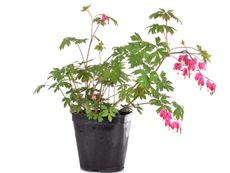 Houseplant Bleeding Heart Care – Growing A Bleeding Heart Plant Inside
Houseplant Bleeding Heart Care – Growing A Bleeding Heart Plant InsideIn order to be able to grow bleeding heart as a houseplant, it is important to know the conditions that this plant enjoys outdoors.
By Raffaele Di Lallo
-
 Bleeding Heart Color Change – Do Bleeding Heart Flowers Change Color
Bleeding Heart Color Change – Do Bleeding Heart Flowers Change ColorKnown for their lovely heart-shaped blooms, the most common color of which is pink, the gardener may find that a previously pink bleeding heart flower is changing color. Is that possible? Do bleeding heart flowers change color and, if so, why? Find out here.
By Amy Grant
-
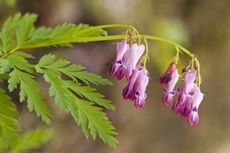 Caring For Bleeding Hearts: How To Grow A Fringed Bleeding Heart Plant
Caring For Bleeding Hearts: How To Grow A Fringed Bleeding Heart PlantWhile the old-fashioned Asian native bleeding heart (Dicentra spectabilis) is the most commonly used type in gardens, growing fringed bleeding heart varieties is gaining popularity. What is a fringed bleeding heart? Click here for more information.
By Darcy Larum
-
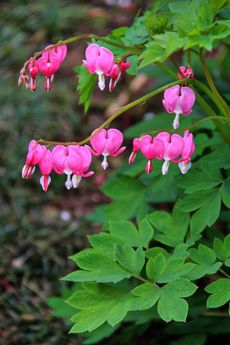 Bleeding Heart Pest Problems – Common Bugs That Eat Bleeding Heart Plants
Bleeding Heart Pest Problems – Common Bugs That Eat Bleeding Heart PlantsBleeding heart is an old-fashioned perennial that adds color and charm to shady spots in your garden. While the plant is surprisingly easy to grow, it can fall prey to a number of pesky insects. If you think something is bugging your plant, click here to learn more.
By Mary H. Dyer
-
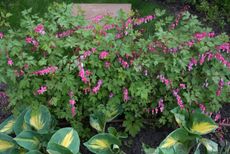 Bleeding Heart Diseases – Recognizing Diseased Bleeding Heart Symptoms
Bleeding Heart Diseases – Recognizing Diseased Bleeding Heart SymptomsBleeding heart (Dicentra spectablis) is a relatively hardy plant in spite of its lacy foliage and delicate, dangling blooms, but it can be plagued by a handful of diseases. Click on the following article to learn about common diseases of bleeding heart plants.
By Mary H. Dyer
-
 Caring For Bleeding Heart Transplants – How To Transplant A Bleeding Heart Plant
Caring For Bleeding Heart Transplants – How To Transplant A Bleeding Heart PlantGot a bleeding heart plant that always looks spindly, yellow and barely producing any flowers? If you find yourself in a circumstance like this and need to move a bleeding heart plant, then click on the article that follows for information on transplanting bleeding hearts.
By Darcy Larum
-
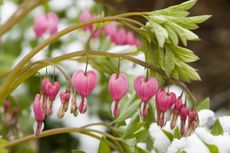 Winterizing A Bleeding Heart Plant – How To Overwinter A Bleeding Heart
Winterizing A Bleeding Heart Plant – How To Overwinter A Bleeding HeartBleeding heart bushes bring a colorful and Old World charm to any garden. But what should you do when temperatures start to drop? Click here to learn more about bleeding heart winter care and how to protect a bleeding heart during winter.
By Liz Baessler
-
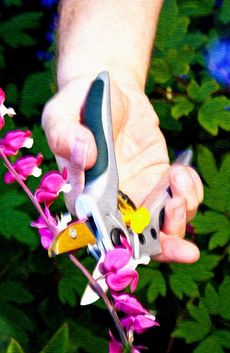 Tips For Bleeding Heart Pruning – How To Prune A Bleeding Heart Plant
Tips For Bleeding Heart Pruning – How To Prune A Bleeding Heart PlantBleeding heart plants are beautiful perennials that produce very distinctive heart-shaped flowers. But how do you keep one in check? Does it need regular pruning, or can it be allowed to grow on its own? Learn more about how and when to prune bleeding hearts here.
By Liz Baessler